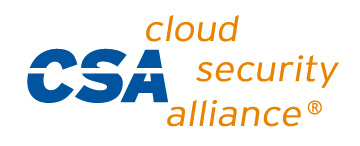
Diversity Attracts Diversity: Authentically Reaching Candidates with Disabilities
October is National Disability Employment Awareness Month and we're recognizing the 75th annual observance of NDEAM in 2020. The best career sites go beyond attracting, engaging and converting high-performing candidates by delivering an experience that caters to everyone — including those who have disabilities. Career site accessibility represents inclusion at its finest: Connecting with talent of all abilities, enabling them to browse your job opportunities, and ultimately, apply for a position within your company. Since 2018's jump in related legal proceedings from 815 to 2,258, digital accessibility has become much more than a law. It’s an expectation for your candidate experience and your employer brand, with the power to make or break your organization's ability to acquire diverse top talent. Sean Rego, former Director of Talent Acquisition at The Conti Group, has about 25 years of experience in the TA field. He also knows what it's like to be a high-performer with a disability — Rego lives with adult Attention Deficit Disorder (ADD). For Rego, who previously oversaw strategy and support for The Conti Group's TA function, accessibility has always been about creating and providing reasonable accommodations for anyone with a disability or unique need. He's teamed up with various organizations over his career to recruit people who are blind, people who've retired, and others who face physical, mental, and psychological challenges. And the big takeaway here is that he understands both sides of the coin — having a disability and offering career opportunities to others with one. He has a unique take on the importance of a digitally accessible career site, well beyond compliance. The career site is critical in catering to candidates with disabilities, and it can be the very factor that wins top talent for the organization, according to Rego. "I think the majority of people have something that challenges them in their day-to-day life, and making this more mainstream is what we need to do," he said. From a recruiting standpoint, Rego's firsthand experience with ADD makes him exceptionally equipped to hire a wide variety of individuals. He's able to see beyond the programmatic ways in which many companies recruit prospective employees, allowing him and his team to connect with qualified people, including candidates with disabilities. "I've always focused on finding the best and the brightest, and it's through a concerted effort of not just posting jobs, but reaching out. I look for the qualifications of the individuals," said Rego, whose team has included a person with dyslexia and someone with Tourette’s syndrome. Whether it’s to support D&I initiatives, or simply to do the right thing, your career site — like Rego's approach — must be inclusive to all visitors, and tailored to those living with mobility, visual, auditory, and cognitive conditions. EXPLORE: Support WCAG 2.0 standards for an inclusive career site With the right things on your career site, your organization can become the first choice for talented individuals, disability or not. How can your site invite people inside your company and start a relationship with them from the get-go? It's about leveraging technology. Design the platform to grab the attention of candidates, and from there, provide meaningful media and experiences to keep them engaged. Think of each visit to your career site as a new one-on-one conversation that powerfully impacts your company's image and employer brand. "Diversity attracts diversity," Rego said. "We have to come together, and companies that aren't doing this face the greatest challenge because they've become stereotyped as not being pro-diversity." Companies that are doing it right make their objective to recruit all the best and the brightest clear from the very first second a candidate visits their career site. Each piece of content, whether copy, photos, or video represent an inclusive culture wherein job seekers with disabilities have the same opportunity to explore and apply for jobs as every other candidate. Exactly how, you ask? By baking in digital accessibility through technology. For example, Phenom career sites are WCAG 2.0 AA compliant out-of-the-box with a pre-approved set of accessibility tools that help remove barriers from a career site and allow more job hunters to find what they’re looking for. In addition, changes made within the Phenom CMS are automatically reviewed prior to publication for compliance issues, including steps on how to meet standards. LEARN MORE: Announcing Phenom Access for Out-of-the-box Career Site Accessibility Attracting candidates with disabilities and bringing an inclusive culture front-and-center on your career site is important, but it also has to be genuine. "If you're selling something that you're not, it's very obvious and that often comes from survey data," Rego said. "If you're wanting to show that you embrace diversity and provide accessibility, it should be about the culture and the value system of your company being genuine." Get a career site that provides equal access to job opportunities — Request a Phenom Access Demo to find out more!
Accommodating and recruiting top talent with disabilities
Demonstrating pro-diversity in your career site and culture
Ensuring genuine inclusivity is part of your culture
Get the latest talent experience insights delivered to your inbox.
Sign up to the Phenom email list for weekly updates!









